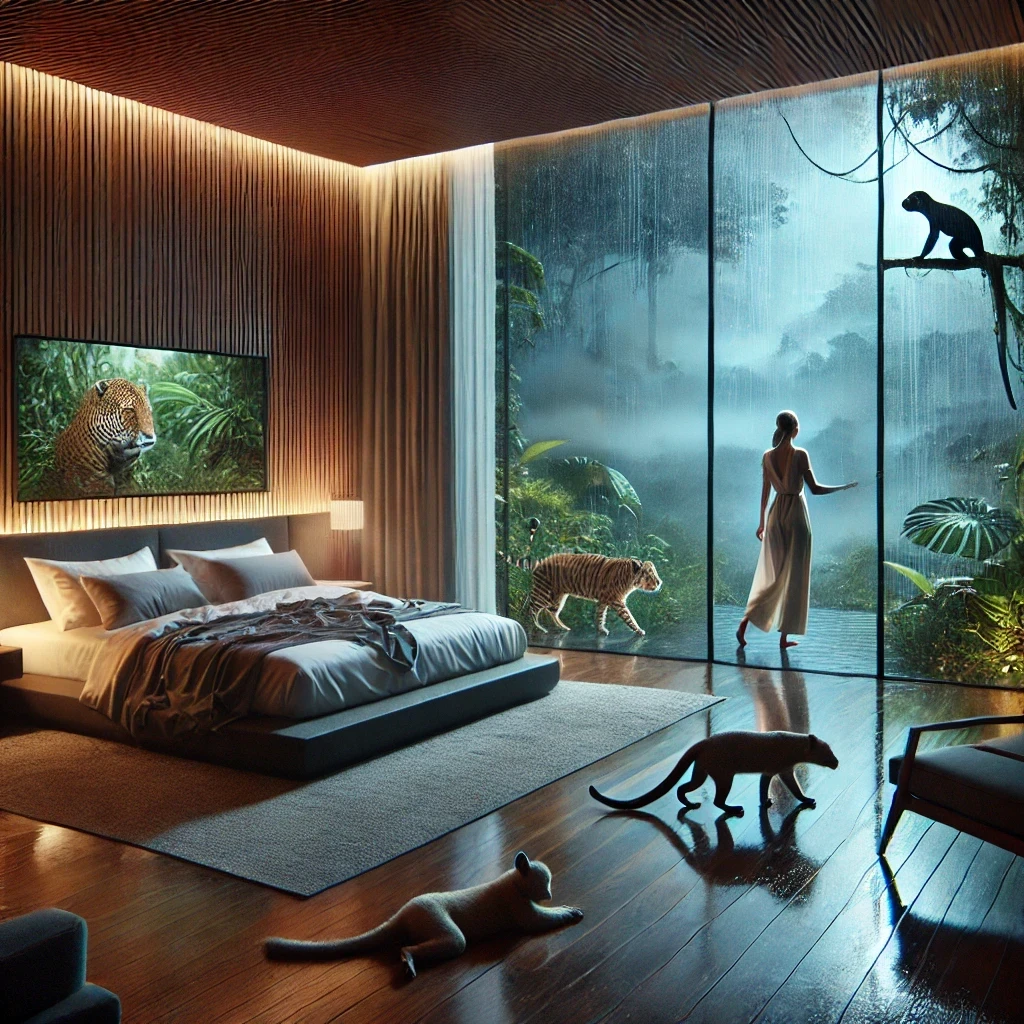
The Animals of The Webflow Kingdom
A reflection on the creative struggle of designers in the digital age. It explores the emotional highs and lows of visual development, drawing parallels between artistic inspiration, perfectionism, and the unpredictable nature of creativity. Through evocative storytelling and references to Elizabeth Gilbert's insights on genius, the piece captures the restless pursuit of meaning in design—where each iteration is both a challenge and an invitation to keep going.
The Animals of The Webflow Kingdom
Oh the burden of the designer, the weight of the creative force. Webflow is not a tool. It's an escape. Every night. I can't seem to get any rest, lately. A lonely space. An infinite playground. Where e-commerce meets artist. Only the bold venture here. It's the kind of culture that leaves hidden messages in designs, breadcrumbs for those who follow. A radio beacon from another visual developer, out there somewhere, whispering through the grid system, saying, "I was here. Keep going."
Visual development is a journey of personal growth, where each challenge shapes us into better creators, better problem-solvers, and ultimately, better versions of ourselves.
We sit at the screen, hands hovering over the keyboard, waiting—hoping—that today, the muse will arrive. That today, the genius will visit us. And when it does, it’s euphoric. But when it doesn’t, when the ideas don’t come, when the pixels feel lifeless under our hands, the silence is deafening. What if it never comes back?

"People did not happen to believe that creativity came from human beings back in the day. People believed that creativity was this divine creative spirit that came from this distant and unknowable source, for distant and unknowable reasons,” says Elizabeth Gilbert in her TED Talk on creative genius.
says Elizabeth Gilbert in her TED Talk on creative genius.
The weight of perfection lifts, but only after hours of wrestling with the same problem, reloading, refreshing, undoing, redoing—because surely, surely, it must work this time.
It’s just me, trapped in an endless loop of iteration, adjusting pixels by a fraction, trying to find meaning in the chaos. Hoping that, maybe, just maybe, all of this struggle will translate into something that resonates, something that makes even one person stop and feel.
“Chemical engineers haven’t earned a reputation for being alcoholic manic depressives. And writers… we kind of do have that reputation. And not just writers, creative people across all genres have this reputation for being enormously mentally unstable.”
We’re all just trying to figure out how it works, how it thinks.

“Norman Mailer, just before he died, said every one of his books killed him a little more. Extraordinary statement to make about your life’s work.” says Gilbert.
Does the value of a pixel go to zero, in this new era?
This isn't about mere reproduction—it's about the symbiotic relationship between human and machine.

We are creatures of the digital age. We consume pixels voraciously, always craving more, seeking greater depth and meaning.
Gilbert evaluates her work:
"I’d rather keep doing this work that I love, and so the question becomes how? It seems to me, upon a lot of reflection, is that the way that I need to work now, in order to continue writing, is that I have to put together some kind of psychological construct, right? I have to sort of, find some way to have a safe distance between me and my natural anxiety to what the reaction to the writing will be from now on…” says Gilbert.
We come from different worlds—architecture, music, engineering, photography—yet we all find ourselves here, tracing the same patterns, obsessing over the same margins. Chasing perfection, yet we remain strangers, connected only by an invisible thread woven through the grid system.

Gilbert discusses her research:
“The Romans called that sort of disembodied creative spirit a genius. They believed a genius was a magical, divine entity, who was believed to literally live in the walls of an artist studio, kind of Dobby the house elf, and would come out and sort of invisibly assist the artist with their work, and would shape the outcome of that work.”
We know the sensation of ideas arriving as if from nowhere. The frustrating nights of blank screens and misaligned elements are followed by moments of inexplicable flow, where the design seems to emerge effortlessly, as if whispered by something beyond.
Grid layouts that expand to fill their container, and flex when it’s appropriate. Proximity that just feels right.
Gilbert takes us on a journey into the mind of Tom Waits.
“All of the sudden he hears this little fragment of melody you know, that comes into head, often as inspiration does, elusive and tantalizing, and he wants it, you know… it’s gorgeous and, he longs for it but he has no way to get it. He doesn't have a piece of paper. He doesn’t have a pencil. He doesn’t have a tape recorder. So he starts to feel all that old anxiety start to rise him, like… I’m gonna lose this thing you know, and I’m gonna be haunted by this song forever, and I’m not good enough, and I can’t do it… and instead of panicking… he just stopped that whole mental process, and he did something novel. He just looked up at the sky and he said… excuse me, can you not see that I’m driving? Do I look like I can write down a song right now? If you really want to exist, come back at a more opportune moment, when I can take care of you. Otherwise, go bother somebody else today. Go bother Leonard Cohen, you know?" says Gilbert.

Perhaps the lesson isn’t in catching the inspiration the moment it arrives, but in trusting that it will return, that the act of showing up is just as important as the spark itself.
Gilbert had an encounter where she met the extraordinary American poet Ruth Stone.
She said that she’d be like running into the house and she’s looking for the paper and the poem passes through her, and she grabs a pencil just as it’s going through her, and then she said it was like… she would reach out with her other hand and she would catch it, catch the poem by its tail, and she would pull it backwards, back into her body as she was transcribing on the page, and in these instances, the poem would come up on the page perfect, and in-tact, but backwards, from the last word to the first. So when I heard that I was like, that’s uncanny, that’s exactly what my creative process is like…” she says.

When creativity fails, when inspiration vanishes, when ideas crash and burn, designers can say it wasn’t entirely their fault.
But designers keep working, because that’s what we do. We put ourselves at risk, over and over, knowing that the world might not care about what we make. It’s the animal in us.

And if creativity truly is something ephemeral, something that drifts in and out of us like a divine force, then maybe our job is simply to show up. To be here when it arrives, and to keep working when it doesn’t.
Webflow is that studio, the kingdom. That space in the walls where the genius lives, waiting to show up and help. It’s a place where work happens, whether inspiration strikes or not. Where designers wake up, sit down, and move their hands. Some days are magic. Some days are miserable. But every day, they show up.


































0 Comments
Login or Register to Join the Conversation
Create an AccountSign In